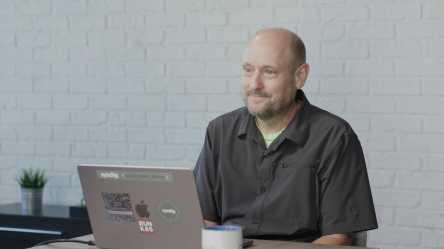Mistakes are good teachers. But you don’t have to make them to learn from them. These tech leaders share the hiring mistakes that taught them the most.

Hiring IT managers is difficult. You are looking for a unicorn-like set of skills: the technical acuity to understand projects and guide engineers, the people skills to do so without ruffling feathers, and a leadership mindset that can build a team and take it in the right direction. Hiring for any tech role can be fraught with peril — with IT managers it’s even more so.
One recent study found that 87% of technology leaders are struggling to find talent that has the skills they need. And when they do find that rare breed, it’s often not as perfect as it first seemed. Deloitte’s 2025 Global Human Capital Trends survey found that, for two-thirds of managers and executives, recent hires did not have what was needed.
Given this landscape, you’re bound to make mistakes. But you don’t have to make all of them yourself. You can learn from what others have experienced and go into this effort with hard-won experience — even if it isn’t your own.
Here are seven lessons other tech leaders have learned the hard way when hiring for IT management roles.
Don’t wait until it’s too late
By the time Ani Mishra, engineering manager at DoorDash, realized he needed to hire an IT manager, it was already too late. He was managing too many people, overwhelmed by meetings, and starting to lean on senior engineers for help. “I thought, okay, I need to bring in a manager,” he says. “But the team was growing super-fast. It kept growing until I had 20 direct reports and I still did not have a manager.”
Managing that many people is crushing. “It’s hard to keep track of what they’re all working on or how to set them up for success,” Mishra says. “I saw signs of dysfunction. People felt directionless and were getting blocked. Some brilliant engineers were taking on manager tasks because I was in back-to-back meetings and firefighting all the time. Productivity lowered because my top performers were doing things not natural to them.”
Fortunately, he had one internal candidate he could promote to a management role. But, by the time he addressed the problem, he needed two IT managers and finding that outside candidate proved exceptionally difficult.
“It took nine months to find someone,” he says. “The lesson for me, is that I should have started this search much earlier.”
Build management skills in people on your team
The other lesson DoorDash’s Mishra learned from this experience was to hone leadership and management skills in the engineers already on the team. The Deloitte study supports this, suggesting that because of the skills shortage, companies need to focus on growing talent internally.
“I saw signs that one of my most senior engineers might make a good people manager,” he says. Mishra ultimately promoted that person and solved half of his management problem. “But even that training takes six months,” he says.
Six months, though, is not nine months and that person is pulling their weight on the team as they learn to grow into that leadership role.
Having learned this the hard way, Mishra now constantly looks for team members and interviewees who might have the long-term vision and human skills needed to step into the role of people manager. “Always prepare a bunch of people on your team that can step up to be a manager,” he says.
Take your time and trust your instincts
Zachary Lewis, CIO and CISO at University of Health Sciences & Pharmacy in St. Louis and the author of Locked Up: Cybersecurity Threat Mitigation Lessons from A Real-World LockBit Ransomware Response, admits that his biggest mistake hiring an IT manager was to let the pressure to hire persuade him to ignore red flags about a candidate.
“Finding people who are appropriate for this role is unimaginably difficult right now,” he says. “He was probably my fifteenth interview. He seemed like a good technical fit, and I was very confident he could handle the work. But there were signs that he didn’t have the interpersonal skills the role called for and I turned those alerts off in my head.”
What were those warnings? Gruffness, a startling directness, and a lack of conversational finesse and comradery. These were evident in the interview and got worse in the role.
“By the time I was interviewing him, though, we were splitting the workload amongst a few of us. Everyone was like, ‘Get someone in here so we can move forward.’” So that’s what Lewis did.
It was a mistake but one he learned from.
“I usually try to find someone I like to talk to,” he says. “I have four direct reports this manager has to interact with. Employees report up to them. I need someone that jibes with the team we’ve created.”
It wasn’t a terrible mistake. Lewis was able to find a suitable role for this engineer and is working on improving his interpersonal skills. But it taught him to pay attention to those red flags in an interview.
Understand what the role needs
Another lesson Lewis learned from this — and other hiring adventures — is to define what the role needs from the IT manager before commencing the search. You are unlikely to find someone that can be everything to all the people on the team, so know what kind of leader you are looking for.
“A lot of technical managers are older than me and have been in the trenches for a long time,” Lewis says. “Then you’ve got these bright-eyed bushy-tailed people, just out of school, who think they’re going to change the world.” You need someone older and wiser to guide and teach those young, inexperienced engineers. But what is it that you need to teach them?
“Is this role going to need that real senior leader who’s technical and can drive initiatives?” says Lewis. “Or do I need someone will help mentor help desk people so they can take their next step? It’s a balancing act.”
Hire slow — fire fast
Caitlyn Mackrell, CEO of AuraData, admits she made a lot of mistakes before finally finding the right IT manager. But her biggest error, she says, was not recognizing her mistakes sooner.
She started out hiring an IT manager who seemed to have the technical skills but who was, ultimately, undone by the complexity of the task. Next, she contracted the work to an outside firm where the project stalled again. Both mistakes dragged on too long, which is expensive, frustrating, and disruptive.
“Knowing when to pull the plug is huge,” she says. “I should have done it earlier. I have a friend, Marty Britton, who wrote a book Screening for the One: How to Gain an Edge in Your Hiring. She says, ‘Hire slow; fire fast.’ I should have done that.”
Ultimately, Mackrell did find the right person. “He not only understands the bigger picture but also fits seamlessly as a leader and friend to our team. People often focus on finding ‘unicorn,’ the perfect person. What’s equally valuable is someone who can deliver results while being a genuinely positive presence to work with. He brings both.”
Look for people who get people
The hard lesson Cameron Rimington, founder and CEO of Iron PDF, learned was that his hiring criteria were all wrong. And he learned that the hard way.
“We recruited a highly competent technical architect,” he says. His technical acumen shined in the interview and Rimington believed his problem-solving skills would translate to interpersonal situations and help him solve human problems. It didn’t.
“I watched him burn out completely in six months,” he says. “He was very good at designing beautiful systems, and solving problems no one else could, but when it came to managing people, he was terrible. He would avoid hard conversations with struggling team members, opting to work late fixing their code,” he says. The team felt lost and the IT manager’s avoidance strategy led to him working impossible hours until he gave up.
“Our current engineering manager comes from a less reputable technical background,” he says. “But he spent the interview talking about people and professional development — not only systems.”
It was a good lesson that taught Rimington to conduct his interviews differently. “I ask specific questions about what they would do in scenarios when dealing with the team,” he says. “Good managers light up when answering those questions. Those who appreciate solving problems as solitary exercises do not.”
Look for people who can influence others
DoorDash’s Mishra learned to hone his interview questions to filter for people who can see into the future and convince others of what they see.
“I ask people to tell me about something they cared about — that they initiated,” he says. “That question differentiates the independent thinkers — those who can convince others to march with them on a shared problem or vision — from people who follow and wait for directions.”
When you lead a technical team, he says, you need to look down the road and see what the business needs will be and what talent, tools, and skills will be necessary to achieve them. Then you have to convince other business units and teams to help you make it happen.
“Do I need a veteran engineer because it’s going to be complex?” he asks. “Or can I get away with hiring new grads who are easier to hire? Do I need new skills — a machine learning engineer or an LLM specialist? If you’re not able to see what is coming in a year, you won’t be able to hire in time. It takes so long to find great talent and get them up to speed.”








